 Kevin Henkes began his career with Susan Hirschman, the founder of Greenwillow Books, who bought his first picture book, All Alone, in 1980. The author-artist was just 19 years old. Since then he has won the 2005 Caldecott Medal for Kitten's First Full Moon, a Caldecott Honor for Owen and a Newbery Honor for his novel Olive's Ocean. When Hirschman brought Virginia Duncan on board in 1997, they all worked together, along with art director Ava Weiss, until Hirschman retired in 2001. Henkes has worked with the same team his entire career--a rarity--and he has always wanted to work on a beginning reader.
Kevin Henkes began his career with Susan Hirschman, the founder of Greenwillow Books, who bought his first picture book, All Alone, in 1980. The author-artist was just 19 years old. Since then he has won the 2005 Caldecott Medal for Kitten's First Full Moon, a Caldecott Honor for Owen and a Newbery Honor for his novel Olive's Ocean. When Hirschman brought Virginia Duncan on board in 1997, they all worked together, along with art director Ava Weiss, until Hirschman retired in 2001. Henkes has worked with the same team his entire career--a rarity--and he has always wanted to work on a beginning reader.
It's unusual to find someone who can so easily move from picture books aimed at preschoolers, such as Wemberly Worried and Julius, the Baby of the World, to novels, such as Olive's Ocean and Junonia. Is the process similar for you?
It's different. With a novel, it's often an image or an object that spurs the idea. Junonia began with the setting. I had wanted to write about Sanibel Island for years. I'd written Bird Lake Moon about two boys, so I wanted to write about a girl. She became an only child. Then an island seemed perfect for a setting, and it all began to fall into place. It was building without my knowing it.
Usually with a picture book, I'll have a more complete image of how I see the book when I begin. With a novel, I know where I want to end up but am not sure how I'll get there. With picture books, I might not know everything, but I know more. What's interesting are the things that develop as I'm working. They sometimes seem exactly right, as if I'd known them all along.
In preparation for the Penny books, did you immerse yourself in other books for beginning readers?
I'd been thinking about this form since my first trip to Greenwillow. I had copies of Eve Rice's Papa's Lemonade and Other Stories, and her Once in a Wood, and of course I knew Frog and Toad and Uncle Elephant. When my kids were little we loved Little Bear and Henry and Mudge. Beginning readers can have emotional depth, and can be a great example of artistic excellence. I didn't use rules or vocabulary lists, but I was thinking about a kid who was just trying to read on his or her own. As when I work on picture books, rhythm and repetition and clarity are important to me. But beginning readers are a different art form. I was thinking about providing all the information that the beginning reader needed, both in words and illustrations. And to be rich and dense and textured, the way I like picture books to be. Some days it felt like I was working on a crossword puzzle.
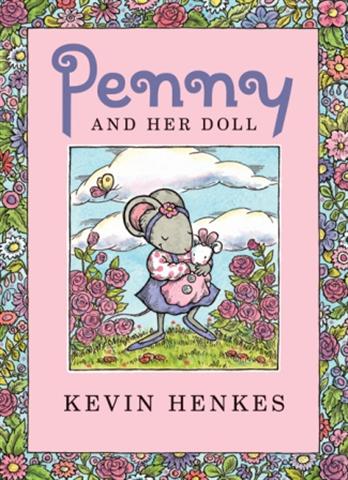 Did you approach the three books separately or as a group?
Did you approach the three books separately or as a group?
I wrote the three books before I did any pictures, and I've never done that before. Each builds on the one before it. Penny and Her Song takes place in Penny's house; Penny and Her Doll takes place in her house and her yard; the third, Penny and Her Marble, takes place in her house, her yard and a bit of the neighborhood as well. The first one is about something that is Penny's--her song. The second is about something she's given--a doll; and the third is about something she takes--a marble. They're very separate, but her world expands with each book. At times it felt like I was working on a picture book, and other times it felt like I was working on a novel.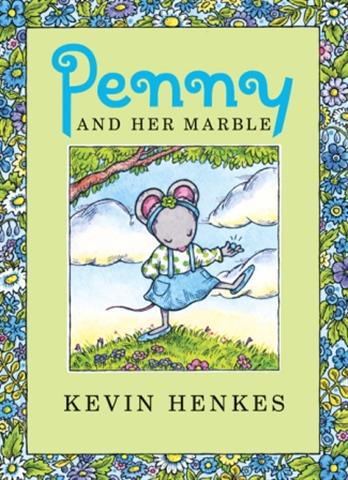
How much attention do you pay to the balance of words and pictures on the page? For instance, you have that terrific windowpane design of Penny making faces at herself in the mirror. Not only is it funny, but it also conveys the sense of Penny waiting to sing her song.
That [four-panel illustration] was originally one image of her at the mirror, but I thought the four-panel piece was a better way to convey the passage of time. I did that with Julius, the Baby of the World, where Lilly [has a time out and] is changing positions in the uncooperative chair. It's one technique I return to when I think it will work. I figure out these kinds of choices when I'm doing thumbnail sketches.
With your books about feelings--starring Wemberly, Lilly and now Penny--it seems as if you used a more delicate line, even though the palette may be very similar to your more nature-based stories, such as A Good Day, Little White Rabbit, Old Bear and even My Garden, though it's more fanciful.
From the very start I envisioned [these four titles] as bigger, larger books, physically, so it seemed natural that the line would be thicker. It was more of an artistic choice than anything else. I've realized that the mouse books are about life within a family, life with friends, life at school, life in your neighborhood. Kitten and Little White Rabbit are all about self: "Who am I in relationship to the world? How do I fit into this?" Old Bear is by himself, and the animals in Good Day are by themselves, too. These books are more introspective than the mouse books.
Most of your artwork is in watercolor and ink. Is that your preferred way to work?
I'm not a painter. I think of myself as a drawer who colors things in. I've tried oils and acrylic paints but I'm not as comfortable working with them. Typically, I'll do rough sketches first, then refined pencil sketches. Next I ink the drawings. Finally, I go back and paint. Probably my least favorite is the painting part. I feel much more in control when I'm drawing.
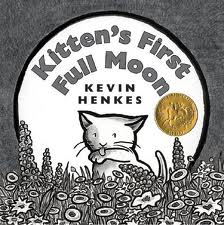 And then there's Kitten's First Full Moon (winner of the 2005 Caldecott Medal). Was it challenging to work in black-and-white after the feast of colors you so often use in your work?
And then there's Kitten's First Full Moon (winner of the 2005 Caldecott Medal). Was it challenging to work in black-and-white after the feast of colors you so often use in your work?
More than anything else, the text of Kitten dictated what the art would look like. I'd always wanted to do a black-and-white book, but it never was right. But when I wrote Kitten it seemed as if this this was my chance.
At the Children's Book and Author Breakfast at BEA, you discussed what you love about picture books.
Two of the things I love about picture books are size and shape. How one uses size and shape informs the book and enhances and heightens its meaning.
I still love a physical book. With a book and a kid, it's such a great opportunity to be together, to build a bond, to have a good time, to have a meaningful emotional talk about something. I can't tell you how many times when my kids were little, when something was happening, we'd pick a book from a shelf and we'd read. I'd be waiting for a particular page to open the door to what was happening in their lives.







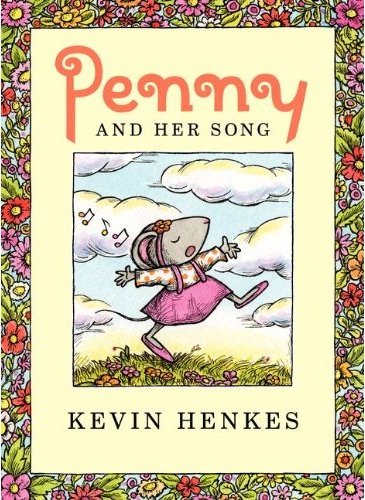 Kevin Henkes, whose picture books provide an emotional documentation of childhood (Wemberly Worried; Lilly's Purple Plastic Purse) introduces a new mouse character named Penny for a spot-on beginning reader series.
Kevin Henkes, whose picture books provide an emotional documentation of childhood (Wemberly Worried; Lilly's Purple Plastic Purse) introduces a new mouse character named Penny for a spot-on beginning reader series.
 Kevin Henkes began his career with Susan Hirschman, the founder of Greenwillow Books, who bought his first picture book, All Alone, in 1980. The author-artist was just 19 years old. Since then he has won the 2005 Caldecott Medal for Kitten's First Full Moon, a Caldecott Honor for Owen and a Newbery Honor for his novel Olive's Ocean. When Hirschman brought Virginia Duncan on board in 1997, they all worked together, along with art director Ava Weiss, until Hirschman retired in 2001. Henkes has worked with the same team his entire career--a rarity--and he has always wanted to work on a beginning reader.
Kevin Henkes began his career with Susan Hirschman, the founder of Greenwillow Books, who bought his first picture book, All Alone, in 1980. The author-artist was just 19 years old. Since then he has won the 2005 Caldecott Medal for Kitten's First Full Moon, a Caldecott Honor for Owen and a Newbery Honor for his novel Olive's Ocean. When Hirschman brought Virginia Duncan on board in 1997, they all worked together, along with art director Ava Weiss, until Hirschman retired in 2001. Henkes has worked with the same team his entire career--a rarity--and he has always wanted to work on a beginning reader. Did you approach the three books separately or as a group?
Did you approach the three books separately or as a group?
 And then there's Kitten's First Full Moon (winner of the 2005 Caldecott Medal). Was it challenging to work in black-and-white after the feast of colors you so often use in your work?
And then there's Kitten's First Full Moon (winner of the 2005 Caldecott Medal). Was it challenging to work in black-and-white after the feast of colors you so often use in your work? 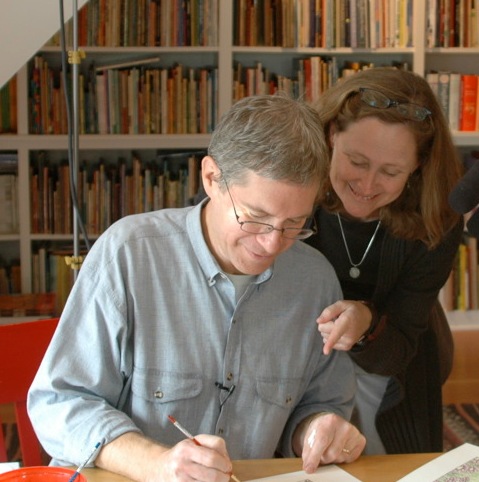 Then comes the major difference between working on a novel with Henkes and working on a picture book. "There's a lot of fine-tuning in the dummy stage," Duncan said. "Moving one word or one line to another page, which is so much fun and so rewarding--that doesn't happen with a novel as much." A Good Day is her favorite of Henkes's picture books. "It's everything you need to know to live a happy life," she said. "It's a complex topic reduced to its essence, and he has the ability to do that."
Then comes the major difference between working on a novel with Henkes and working on a picture book. "There's a lot of fine-tuning in the dummy stage," Duncan said. "Moving one word or one line to another page, which is so much fun and so rewarding--that doesn't happen with a novel as much." A Good Day is her favorite of Henkes's picture books. "It's everything you need to know to live a happy life," she said. "It's a complex topic reduced to its essence, and he has the ability to do that."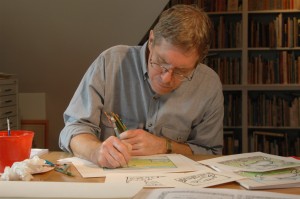 On your nightstand now:
On your nightstand now: